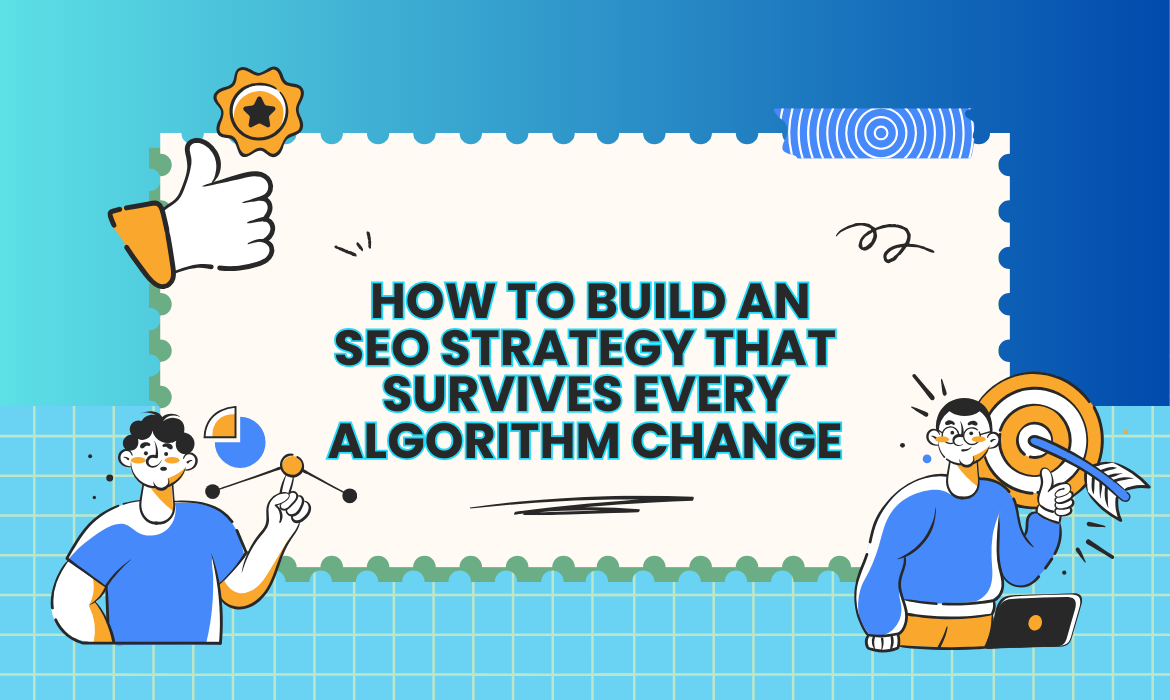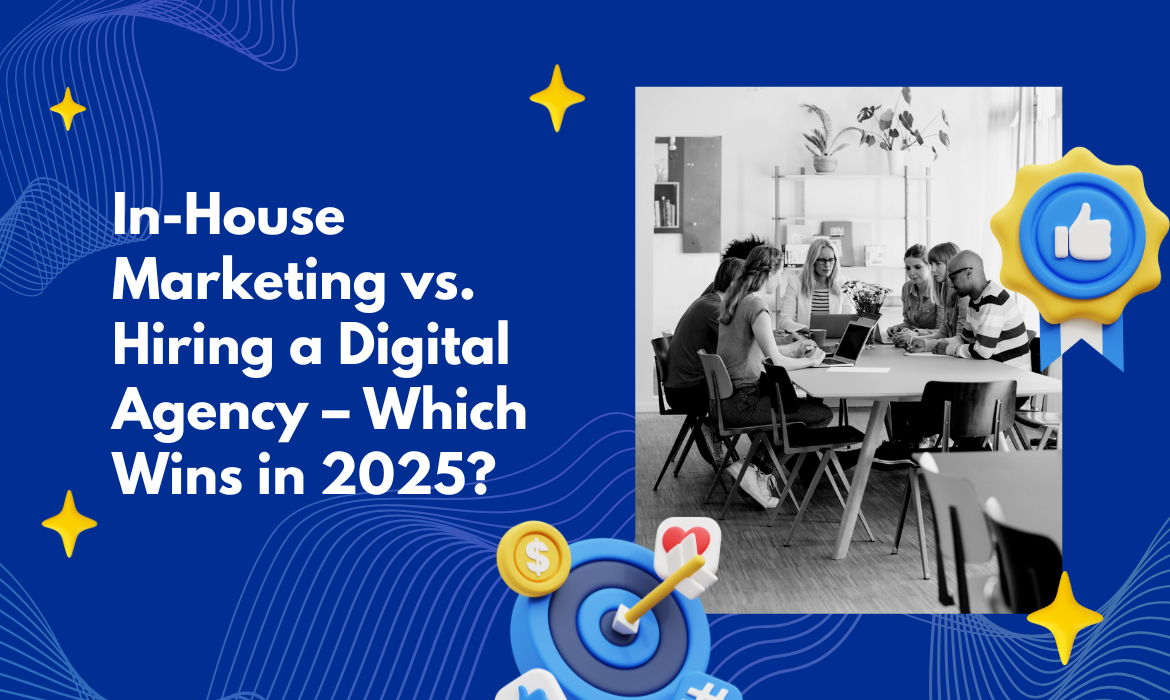
If there’s one thing digital marketers can all agree on, it’s this: Google loves change. Core updates, spam updates, product review tweaks—every few months, search rankings shuffle, traffic graphs wobble, and businesses scramble to figure out what went wrong.
But here’s the good news: while algorithms may change, the fundamentals of great SEO don’t. If you know how to build an SEO strategy for every algorithm change, you can safeguard your site, reduce the panic every time Google makes a move, and even come out stronger when competitors lose ground.
At AimGlobal Digital, we’ve helped brands weather countless algorithm updates by focusing on the timeless principles of search visibility. Let’s break down how you can do the same.
1. Stop Chasing the Algorithm, Start Serving the User:
The first mistake many businesses make is trying to “game the system.” They tweak pages to match the latest ranking factors or overreact to rumors about algorithm updates. The problem? Google’s algorithms evolve faster than any marketing team can pivot.
Instead, anchor your strategy on user intent. Ask:
- What problem is my audience trying to solve with this query?
- Does my content actually deliver a complete, useful answer?
- Is the experience on my site enjoyable, fast, and mobile-friendly?
Google has made it clear: updates aim to reward sites that put users first. If your content is genuinely helpful, algorithm changes will likely benefit you rather than hurt you.
2. Build Around E-E-A-T (Experience, Expertise, Authoritativeness, Trustworthiness):
Over the past few years, E-E-A-T has become the backbone of how Google evaluates content quality. Updates increasingly favor brands and creators who demonstrate credibility.
To future-proof your SEO strategy:
- Show expertise: Publish content written by subject-matter experts, not generic AI copy. Add author bios that highlight qualifications.
- Build authority: Earn backlinks from reputable sites in your industry. The more your peers cite you, the stronger your digital reputation.
- Establish trust: Secure your site (HTTPS), be transparent about who you are, and keep your policies and contact information easy to find.
This isn’t just theory—sites that invest in E-E-A-T often see more stable rankings across algorithm updates.
3. Diversify Content Formats and Channels:
If your SEO strategy only relies on text-based blog posts, you’re leaving yourself vulnerable. Algorithm updates sometimes prioritize different content formats—such as video, short-form FAQs, or visual snippets.
Resilient SEO strategies use content diversification:
- Long-form guides for in-depth queries.
- Videos or tutorials for “how-to” searches.
- Infographics and visuals for quick reference content.
- Podcasts or webinars for niche audiences.
Beyond content format, diversify your channels too. Invest in social media, newsletters, and even podcasts so you’re not 100% dependent on organic search traffic. That way, if an update does temporarily affect you, your audience engagement continues elsewhere.
4. Master Technical SEO and Site Health:
No matter how strong your content is, a weak technical foundation makes you vulnerable. Algorithm updates often raise the bar on performance and usability.
Future-proof your site with:
- Core Web Vitals optimization (fast load times, smooth interaction, stable layout).
- Mobile-first design (responsive, touch-friendly navigation).
- Clean site architecture (easy crawlability, clear hierarchy, internal linking).
- Schema markup (structured data to help search engines understand context).
Think of it like a house: content is the furniture, but technical SEO is the foundation. If the foundation is shaky, everything else risks collapse during an update.
5. Focus on Evergreen Topics, Update Regularly:
Trendy topics might give you a traffic spike, but evergreen content gives you resilience. Think of topics that your audience will always need—guides, FAQs, best practices.
But don’t stop at publishing once. Google loves freshness. Regularly audit and update your evergreen pages to ensure:
- Information is up to date.
- Links aren’t broken.
- Keywords reflect the current search language.
- Data, stats, or examples are refreshed.
A living library of content keeps you stable during algorithm turbulence.
6. Build for AI-Driven Search (AEO & GEO):
In 2025, SEO isn’t just about ranking on Google—it’s also about appearing in AI summaries and generative search results.
That means adopting:
- Answer Engine Optimization (AEO): Write content in Q&A format, use FAQs, and structure paragraphs with concise, answer-like language.
- Generative Engine Optimization (GEO): Use schema markup, clearly attributed sources, and easy-to-quote sections to make your content citation-ready for AI tools.
If AI Overviews and chatbots reference your brand, you can win visibility—even if traditional clicks decline.
7. Monitor, Measure, Adapt:
The most resilient SEO strategies are data-driven. You can’t prevent Google from updating, but you can measure the impact quickly and respond intelligently.
Track key metrics like:
- Organic traffic trends.
- Rankings for core keywords.
- Click-through rates (CTR) from SERPs.
- Engagement metrics (bounce rate, time on page).
- Conversions from organic traffic.
When updates hit, analyze patterns: Did your traffic loss come from specific pages? Were competitors’ sites rewarded for certain content types? This insight guides your adjustments without panic.
8. Think Long-Term: Build a Brand, Not Just a Website
Ultimately, the most bulletproof SEO strategy is brand building. When users know and trust your name, they’ll search for you directly, bypassing the uncertainty of algorithm shifts.
Invest in:
- Consistent branding across platforms.
- Social proof through reviews, testimonials, and case studies.
- Community engagement via newsletters, forums, or events.
Google rewards brands that are recognizable and trusted. The stronger your brand presence, the less you rely on fragile algorithm-driven traffic.
Conclusion: Build an SEO Strategy That’s Update-Proof
The truth is, there’s no magic shield against algorithm changes. But there is a way to build a strategy that weathers every storm: focus on users, strengthen your credibility, keep your site technically sound, diversify your formats, and embrace AI-driven search.
At AimGlobal Digital, we’ve seen it all—Google Panda, Penguin, Medic, Helpful Content, Core Updates, and beyond. The businesses that thrive are the ones that treat SEO as a long-term, user-focused strategy, not a game of cat and mouse with Google.
Ready to build an SEO strategy that stands strong through every algorithm update? Let AimGlobal Digital help you craft a roadmap for resilience, growth, and future-proof visibility. Contact us today for a customized SEO strategy session that ensures your brand not only survives—but thrives—no matter what Google throws next.


![Turning Clicks into Conversions!We’re proud to showcase our latest success story — Furnipark.com, a complete e-commerce transformation project crafted to elevate the online furniture shopping experience.From strategy and UX design to Shopify integration and automation, our goal was simple — build a high-performing website that drives real business growth.💡 Clean UI. Fast performance. Seamless checkout.
That’s how we help brands like Furnipark scale smarter online.📩 Looking to build or revamp your e-commerce website?
Let’s create a digital experience your customers will love.👉 Reach out at sales@aimglobal.digital
or visit www.aimglobal.digital[e-commerce website development, Shopify website, digital transformation, UI/UX design, conversion optimization, website redesign, performance marketing, online furniture store, web development agency, Aim Global Digital]](https://aimglobal.digital/wp-content/plugins/instagram-feed/img/placeholder.png)




